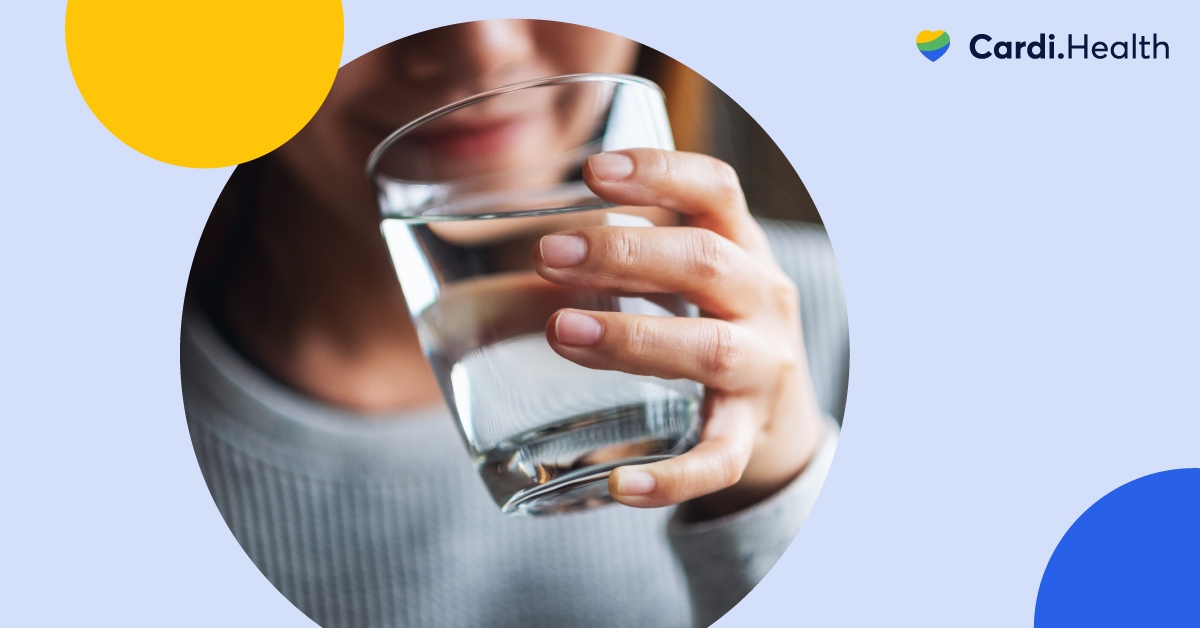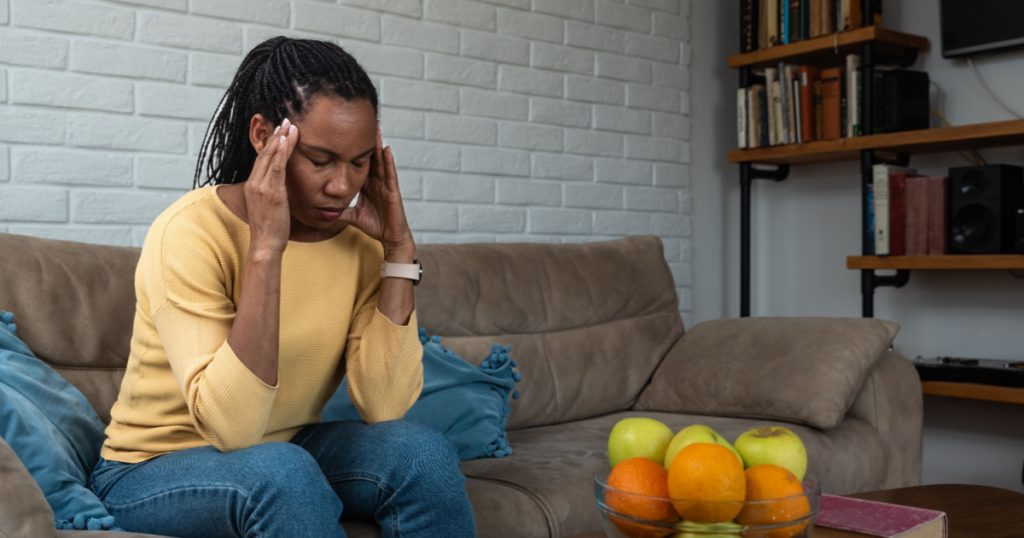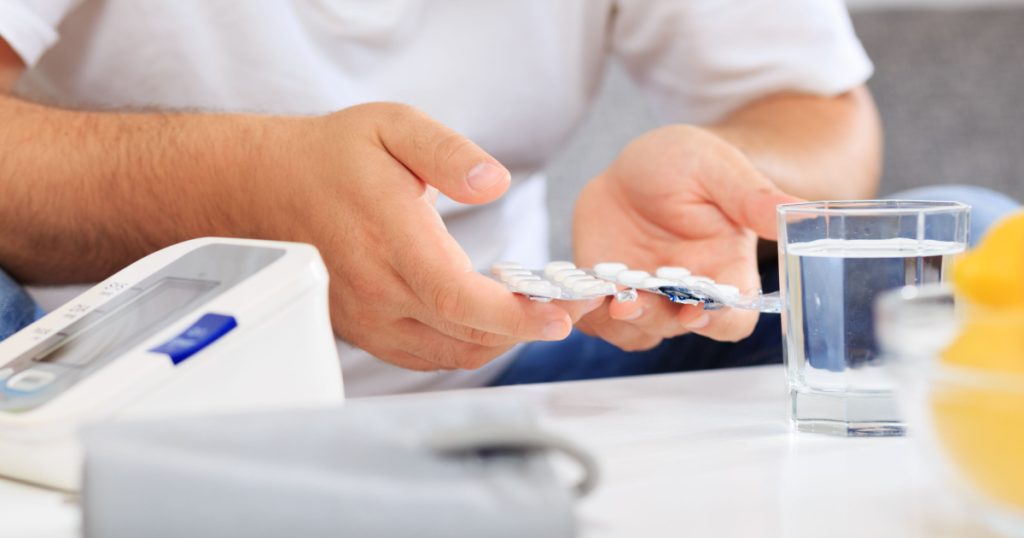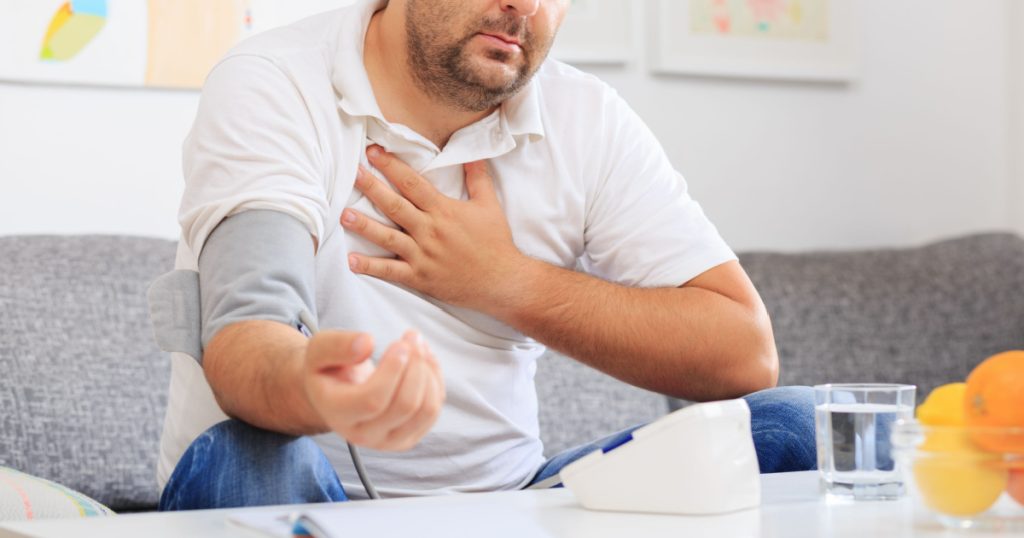Tricks to Lower Blood Pressure Instantly: Quick Methods and Long-Term Tips
Of about 120 million Americans who have high blood pressure, only a quarter of them have their blood pressure under control. With such staggering statistics, it becomes imperative to explore effective methods to control high blood pressure when the need arises.
Taking control of your blood pressure can help you avoid several health risks, including heart attack, stroke, kidney disease, and more. It’s clear that high blood pressure is a condition that requires serious attention and should never be underestimated.
In this article, we present a collection of quick tips and long-term strategies that can serve as your trusted allies in the battle against high blood pressure. Discover practical tips for lowering blood pressure and protect your well-being for years to come.

Master your heart health now
Take part in our 60sec quiz and get a heart health plan tailored just for you.
Contents
Recognizing Hypertensive Crisis: What to Look for and What to Do

A hypertensive crisis is a medical emergency when your blood pressure suddenly increases to levels higher than or equal to 180/120mmHg.
Not only are blood pressure levels this high dangerous, but when blood pressure immediately increases like this, it can put a lot of stress on the blood vessels and pose a lot of danger, including:
- Stroke
- Heart attack
- Kidney damage
- Eye damage
- Loss of consciousness
- Memory loss
Hypertensive crises manifest in two different forms: hypertensive urgency and hypertensive emergency. While hypertensive urgency typically presents without symptoms, the condition escalates to hypertensive emergency when accompanied by noticeable signs. These symptoms can vary and may include:
- Chest pain
- Back pain
- Shortness of breath
- Severe headache
- Blurred vision
- Seizures
- Nausea and vomiting
- Numbness
With the serious consequences of a hypertensive crisis, it’s especially important to receive medical attention immediately. When not treated urgently, it can be fatal.
Start managing your heart health now!
Find out what works for you with this 60sec quiz.

Quick Methods to Lower Blood Pressure in an Emergency
If you happen to check your blood pressure at home and find that it’s on the high side, there are a few practical tactics you can try. Interestingly, when done correctly, these techniques have the potential to yield quick results, lowering your blood pressure immediately.
Calming breathing exercises
Breathing exercises have been proven to help lower your blood pressure in the short term, which makes them a great intervention if you notice your blood pressure is too high.
It has also been shown that these exercises can help manage stress, which can further reduce blood pressure.
Diaphragmatic breathing is one calming breathing exercise you can utilize to lower high blood pressure. The steps below will show you through this:
- Lie on a flat surface like a bed and close your eyes. You can eventually progress to doing this while sitting.
- Put a hand on your chest and another on your belly.
- Breathe in through your nose for about 4 seconds. The aim is to only have the hand on your abdomen move. The one on your chest should remain still.
- Hold your breath for about 2 seconds.
- Now, through your mouth, breathe out slowly. It should last for about 6 seconds, and once again, only the hand on your belly should move.
- Now, repeat the steps again for as little as 5 minutes and as long as 15. If you feel lightheaded, you can speed up your breaths.
Another exercise is a Japanese technique that recommends taking 6 deep breaths within 30 seconds to reduce blood pressure.
- Sit up straight in a quiet location and have a timer ready and set for 30 seconds.
- Start the timer and close your eyes.
- Breathe in through your nose and out through your mouth, with each lasting about 5 seconds.
Applying cold compresses
Applying a cold compress is a quick way to lower your blood pressure. A study done in Turkey found that a cold compress applied to the head was able to normalize not only systolic and diastolic blood pressure but also heart rate.
When applying a cold compress, if using an ice pack, make sure you have a clean cloth between it and your skin and avoid applying it for more than 20 minutes at a time.
Drinking water to stay hydrated
When you’re dehydrated, your blood pressure can be lower due to reduced blood volume or higher due to constriction of blood vessels.
Making sure that you’re properly hydrated at all times can help ensure that you maintain normal blood pressure – and, of course, lower high blood pressure.
Make sure to drink enough water each day. Keep in mind that sugary drinks are not a good choice because they can ultimately worsen dehydration.
Taking a refreshing shower
Just as a cold compress can lower high blood pressure, so can a cold shower. In fact, a cold shower has been shown to help treat high blood pressure by increasing blood circulation.
Try to aim for temperatures around or below 60°F (about 15°C) to really get the feel of a cold shower. Starting around 30 seconds on your first day and working up to about 3 minutes can be beneficial.
Going for a brisk walk
Brisk walking is an aerobic exercise that anyone can do, which is great for pumping blood. Fortunately, aerobic exercises generally help lower your blood pressure. A study showed that one session of exercise like brisk walking could lower blood pressure effectively.
You may choose to go for a brisk walk or explore other moderate exercises such as cycling or swimming. The choice is yours, and each of these activities can play a key role in promoting healthy blood pressure management.
Lying down
When a person lies down and raises their legs, such as while resting on a pillow, it’s effective in lowering blood pressure.
Having your legs raised at about a 60-degree angle may be enough to lower blood pressure in as little as a minute.
Having some dark chocolate
The delicious remedy that is dark chocolate, in the short term, is an effective way to lower your blood pressure relatively quickly. Interestingly, this effect was not seen with white chocolate, likely due to the flavanols that dark chocolate is richer in.
If you want to lower blood pressure naturally and fast, you can eat a small chunk of this delight. Remember: the darker it is, the better.
When to Take Medication

While these tips can be great if you’re looking to better control blood pressure, sometimes what you really need are effective blood pressure medications. This is especially true during a hypertensive crisis.
Some common medications that can be used to lower your blood pressure at times like this include:
- Nifedipine
- Hydralazine
- Labetalol
- Fenoldopam
- Sodium nitroprusside
However, it’s extremely important that you talk to a healthcare professional before attempting to lower blood pressure instantly with any medication. It’s smart to reduce blood pressure in a controlled way, so make sure you don’t skip doctor visits.
Long-Term Tips for Maintaining Healthy Blood Pressure
Now that we’ve explored some quick and effective tips that can lower your blood pressure, let’s shift our focus to long-term lifestyle changes. These are the game-changers that have the potential to keep your blood pressure in check for the long haul, as long as you commit to them.
Healthy eating habits for long-term blood pressure control
The Dietary Approaches to Stop Hypertension, or DASH, diet was specifically designed to be the optimal diet to lower blood pressure. The DASH diet increases the nutrients that can improve heart health and reduces those that can harm it.
It’s been proven that this diet can lower blood pressure, even without reducing how much sodium you eat.
In a DASH diet, you want to increase your intake of the following foods and nutrients:
- Fruits
- Vegetables
- Whole grains
- Nuts
- Low-fat dairy
- Nuts, seeds, and beans
- Lean meats, skinless poultry, and fish
- Healthy fats
Limiting sodium intake
It’s well known that increased sodium intake can lead to high blood pressure. It is thought to pull water into the blood vessels, increasing blood volume, which leads to elevated blood pressure.
The average daily American diet has a lot more than the recommended 2,300mg of sodium. Even if you don’t add salt to the food you cook, most of your intake comes from processed foods and restaurant meals.
Here are some tips that you can follow to bring blood pressure down by reducing sodium intake:
- When buying canned foods, opt for low or no sodium/salt variants.
- Check food labels on packaged products to see the percentage of your daily sodium value that each serving has. Anything over 20% per serving is high. Less than 5% is considered low.
- Buy fresh meats when possible instead of those that have been smoked, cured, salted, and similar.
- Cook and eat more at home, as it’s easier to control salt content.
- Add less salt to the food you cook at home. Use seasonings, spices, lemon juice, and vinegar to compensate.
- When eating out, ask for no salt to be added to your dish.
- Avoid fried foods and regular fast food as much as possible.
Start managing your heart health now!
Find out what works for you with this 60sec quiz.

Regular exercise and its impact on blood pressure
If you’re living with high blood pressure, you’ll find that working out regularly can help lower blood pressure quite effectively. This might be because physical activity basically dilates peripheral blood vessels.
The good thing is that you can reduce high blood pressure with just about 150 minutes of moderate activity every week. This can be aerobic activity or weight training, whichever you’re more comfortable with.
If you’re not typically active, it’s a good idea to find an activity that you find enjoyable. This can be cycling, hiking, jogging, swimming, and others.
Try to find a convenient time every day for these activities. Also, getting a friend or partner to do your activity with can make it a lot easier for you to stay consistent.
Managing stress for long-term blood pressure reduction
When you deal with chronic stress, it’s likely to increase your risk of high blood pressure. And for someone who already has high blood pressure, it’s likely to make things worse.
This is why it’s important to find healthy means to take care of your stress. With the right stress reduction techniques, you can make your high blood pressure a lot more manageable. Here are a few you can try out:
- Recognize the things that might cause you stress, and, if possible, reduce your exposure.
- Take time each day to relax, whether by listening to music, sitting in nature, or reading a book.
- Surround yourself with people you enjoy being with and socialize with them.
- Breathing exercises, as earlier described, can help reduce the stress you feel.
- Exercise sessions can also help relieve stress.
- Find calm hobbies like knitting, doing jigsaw puzzles, or making crafts.
Maintaining a healthy weight
Being overweight or obese is linked to a higher risk of high blood pressure. In fact, it is associated with a greater risk of a range of diseases, including heart disease.
The good thing is that two of the other long-term methods for controlling high blood pressure – regular exercise and a healthy diet – can be used to shed any excess weight.
It can be hard to lose weight on your own, but fortunately, there are many apps that make it easier to track your blood pressure at home, and many of them, like Cardi Health, can create a personalized fitness and diet plan for you.
Limiting alcohol consumption
It’s been established that high blood pressure can be caused by high consumption of alcohol. However, the exact mechanism through which this happens remains uncertain.
Despite this, it’s clear that for people with high blood pressure, reducing alcohol consumption can bring them a step closer to achieving normal blood pressure. However, cutting down on alcohol can be tough, so here are some recommendations you can follow:
- Start by reducing alcohol intake and not cutting it out. Stick to no more than two drinks a day as a man, and no more than one as a woman. In this case, one drink could be a 12-ounce beer, 5 ounces of wine, or 1.5 ounces of 40% alcohol.
- You can turn to alternative beverages like alcohol-free beer. This can help you stick with the taste you like without the damaging effects.
- Also, try to avoid having alcohol at home. This makes drinking too convenient and will, without a doubt, raise blood pressure.
Quitting smoking
It’s no secret that smoking increases blood pressure, so if you’re someone with high blood pressure, it can be very helpful to quit smoking. Generally speaking, smoking isn’t good for the cardiovascular system and can increase the risk of different kinds of heart disease.
You might find it easier to quit smoking with the right interventions. Nicotine replacements like patches and gum can help take care of your body’s cravings, and support groups can put you in a better mental state.
Importance of Regular Blood Pressure Monitoring

If you have high blood pressure, it’s important to make sure you regularly keep track of your blood pressure at home. This makes it possible to see when your blood pressure is changing and something might be wrong.
To keep track of blood pressure at home, you’ll need a blood pressure monitor, and the Cardi Health BP Monitor is one of the best options. What makes it even better is the fact that you can use it alongside the Cardi Health app to measure your blood pressure over time and discover trends and fluctuations.
If you have high BP, this app can also give you tips on exercise and diet to help with reducing blood pressure.
Start managing your heart health now!
Find out what works for you with this 60sec quiz.

FAQ
What is a hypertensive crisis?
A hypertensive crisis is a sudden spike in blood pressure to levels equal to or greater than 180/120mmHg, posing serious health risks like stroke and heart attack.
What are the symptoms of a hypertensive emergency?
Symptoms can include chest pain, severe headache, shortness of breath, blurred vision, and nausea, among others.
How can I quickly lower my blood pressure in an emergency?
Techniques include calming breathing exercises, applying cold compresses, staying hydrated, taking cold showers, brisk walking, lying down with legs raised, and eating dark chocolate.
When should I take medication for high blood pressure?
Medication is crucial during a hypertensive crisis, but always consult a healthcare professional before starting or altering any medication.
Tricks to Lower Blood Pressure Instantly: Key Takeaways
When living with high blood pressure, there are tips you can follow to help lower it.
You can use quick tips like a cold compress or shower, breathing exercises, and dark chocolate. You can also make long-term lifestyle changes like a better diet, increased activity, and stress management.
Either way, while you do these, it’s important to make sure that you check your blood pressure regularly. At its very worst, high blood pressure can be fatal.
Cardi Health is a comprehensive app that can make it easy to monitor and help lower blood pressure effectively.
Related articles
Best Foods to Lower Cholesterol
Does Caffeine Raise Blood Pressure?
Does Drinking Water Lower Blood Pressure?
Causes of High Blood Pressure at Night
10 DASH Diet Breakfasts for a Healthy Start
Heart-Healthy Diet Guide
What Should an 85-Year-Old Blood Pressure Be?
What is Normal Blood Pressure for a 70-Year-Old?
How to Read Blood Pressure: A Comprehensive Guide
Manage your heart health now
Find out what works best for you with this 60sec quiz and get your personalized heart health plan.

